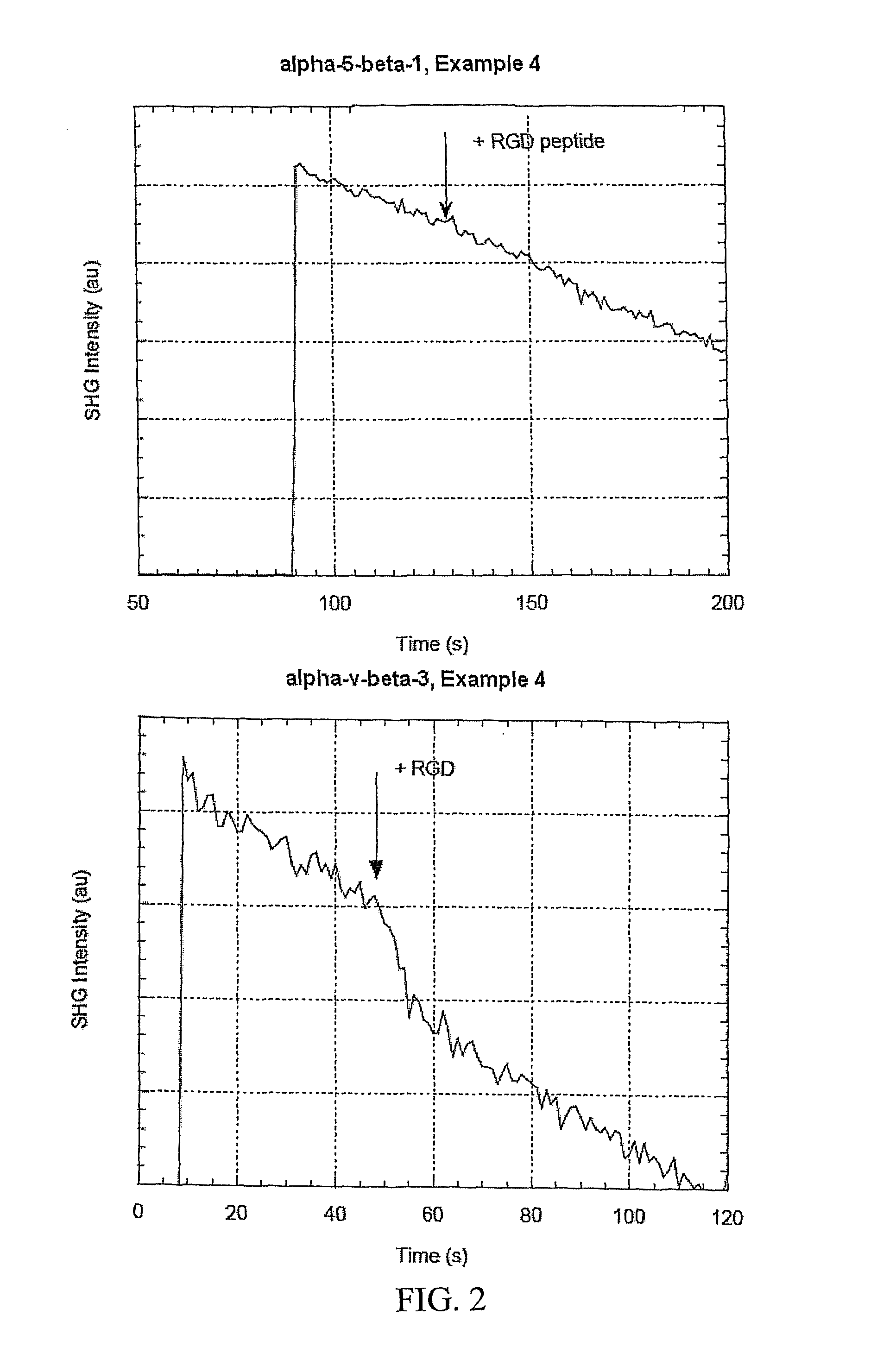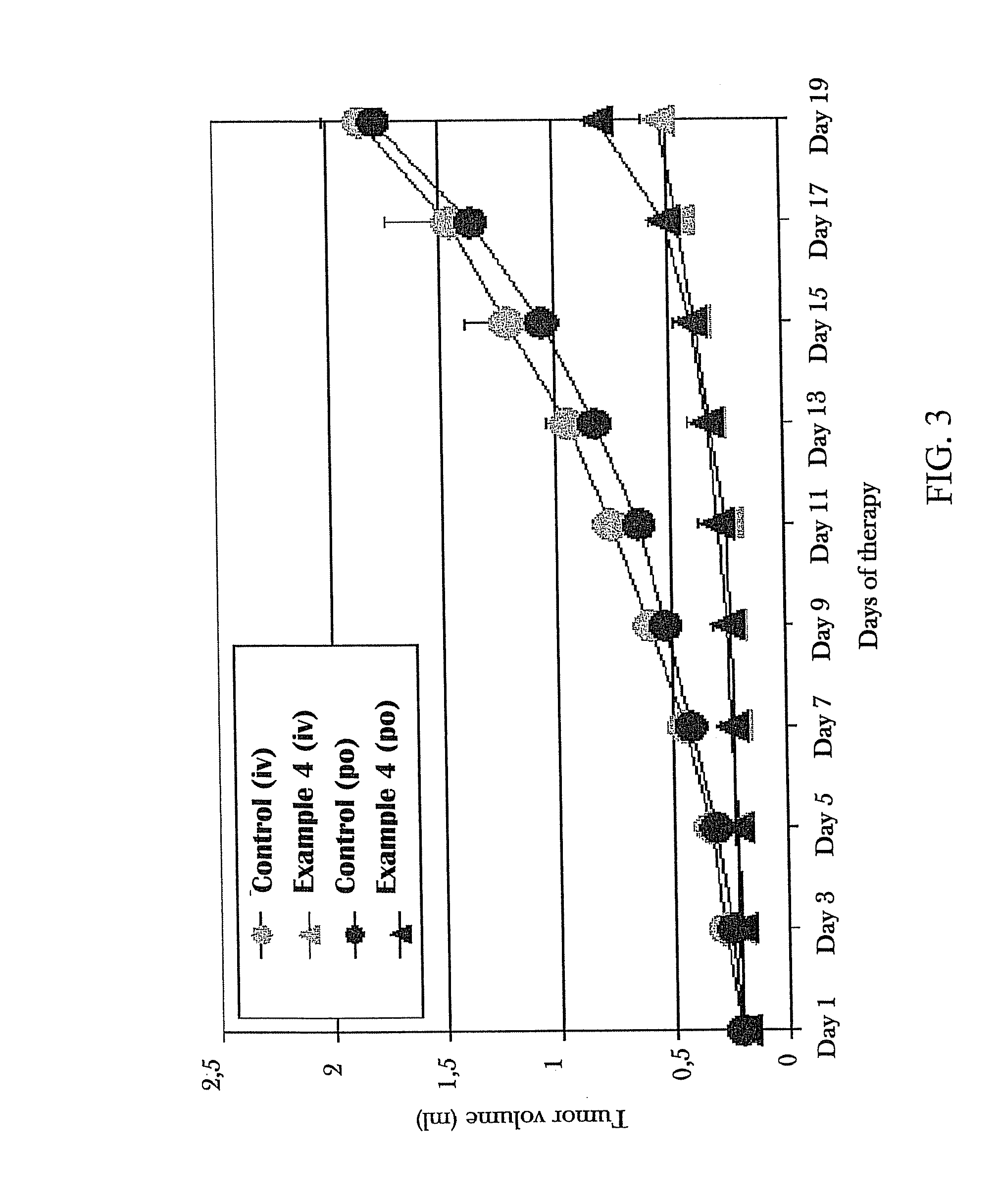Quinoline derivatives and their use as tyrosine kinase inhibitors
a technology of tyrosine kinase inhibitor and quinoline derivative, which is applied in the field of quinoline derivatives to achieve the effect of improving solubility properties
- Summary
- Abstract
- Description
- Claims
- Application Information
AI Technical Summary
Benefits of technology
Problems solved by technology
Method used
Image
Examples
example 1
Ethyl 6-(methylcarbamoyl)-4-[(4-methylphenyl)amino]quinoline-3-carboxylate. (Intermediary Product)
[0074]
(a) Preparation of Intermediary Compound 2-[(4-bromophenylamino)methylene]malonic Acid Diethyl Ester
[0075]
[0076]A 20 mL microwave vial was charged with 4-bromoaniline (6.881 g, 40.0 mmol), diethyl ethoxymethylenemalonate (8.650 g, 40.0 mmol) and toluene (5 mL). The vial was capped and the mixture was microwave heated at 150° C. for 30 min. After cooling, the solution was poured onto 50 mL of vigorously stirred iso-hexane. A thick, white precipitate formed and the suspension was stirred for another 15 min. The suspension was filtered and the product washed with 20 mL of iso-hexane. The product was dried under vacuum to give 11.678 g (85%) of 2-[(4-bromo-phenylamino)methylene]malonic acid diethyl ester. MS (ESI+) m / z 342, 344 (MH+).
(b) Preparation of Intermediary Compound 6-bromo-4-chloroquinoline-3-carboxylic Acid Ethyl Ester
[0077]
[0078]A 20 mL microwave vial was charged with 2-[(4...
example 2
6-Methylcarbamoyl-4-p-tolylamino-quinoline-3-carboxylic Acid
[0082]
[0083]Ethyl 6-(methylcarbamoyl)-4-[(4-methylphenyl)amino]quinoline-3-carboxylate was hydrolysed under basic conditions using NaOH (aq.). The final product was purified by column chromatography.
example 3
Ethyl 4-[(4-methoxyphenyl)amino]-6-(methylcarbamoyl)quinoline-3-carboxylate. (Intermediary Product)
[0084]
(a) Preparation of Intermediary Compound 2-[(4-bromophenylamino)methylene]malonic Acid Diethyl Ester
[0085]
[0086]4-Bromoaniline (10 g, 0.058 mol) and 12.58 g of diethoxymethylene malonate (1 equiv.) were heated at 150° C. for 3 h in a sealed tube. The reaction mixture was then cooled and diluted with hexane when the solid product precipitated out. This solid was filtered, washed several times with hexane and dried under vacuum to afford 17.8 g (89%) of 2-[(4-bromo-phenylamino)methylene]malonic acid diethyl ester. 1H NMR (300 MHz, CDCl3) δ 11.03 (d, 1H, J=13 Hz, —NH—), 8.48 (d, 1H, J=13 Hz, —CH═C), 7.49 (m, 2H, aromatic), 7.10-7.01 (m, 2H, aromatic), 4.42-4.22 (m, 4H, —CH2—CH3), 1.45-1.26 (m, 6H, —CH2—CH3); LC-MS (m / z) 343.9 (M+1).
(b) Preparation of Intermediary Compound 6-bromo-4-chloroquinoline-3-carboxylic Acid Ethyl Ester
[0087]
[0088]2-[(4-Bromophenylamino)methylene]malonic acid...
PUM
| Property | Measurement | Unit |
|---|---|---|
| volume | aaaaa | aaaaa |
| vascular permeability | aaaaa | aaaaa |
| adhesion | aaaaa | aaaaa |
Abstract
Description
Claims
Application Information
 Login to view more
Login to view more - R&D Engineer
- R&D Manager
- IP Professional
- Industry Leading Data Capabilities
- Powerful AI technology
- Patent DNA Extraction
Browse by: Latest US Patents, China's latest patents, Technical Efficacy Thesaurus, Application Domain, Technology Topic.
© 2024 PatSnap. All rights reserved.Legal|Privacy policy|Modern Slavery Act Transparency Statement|Sitemap



